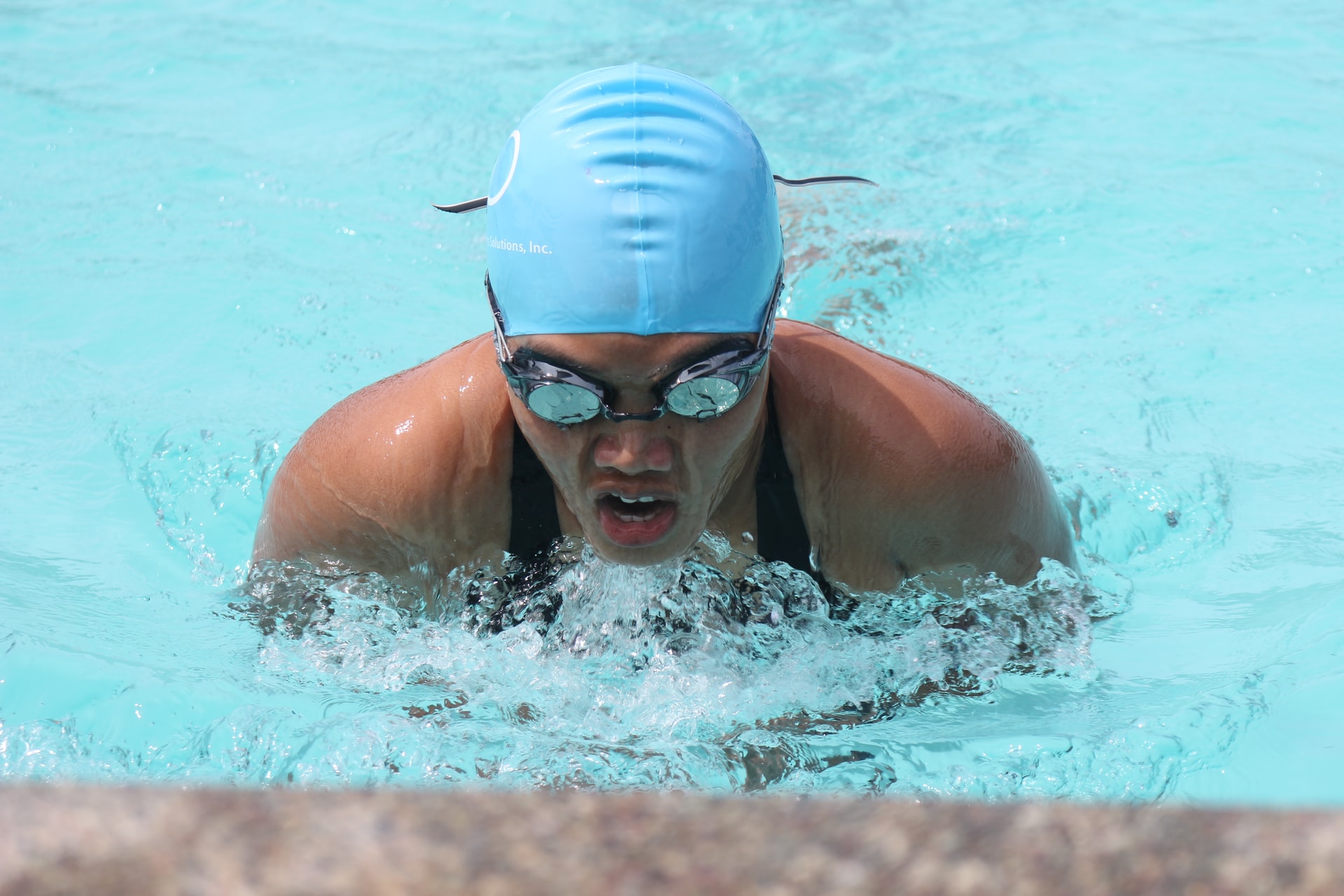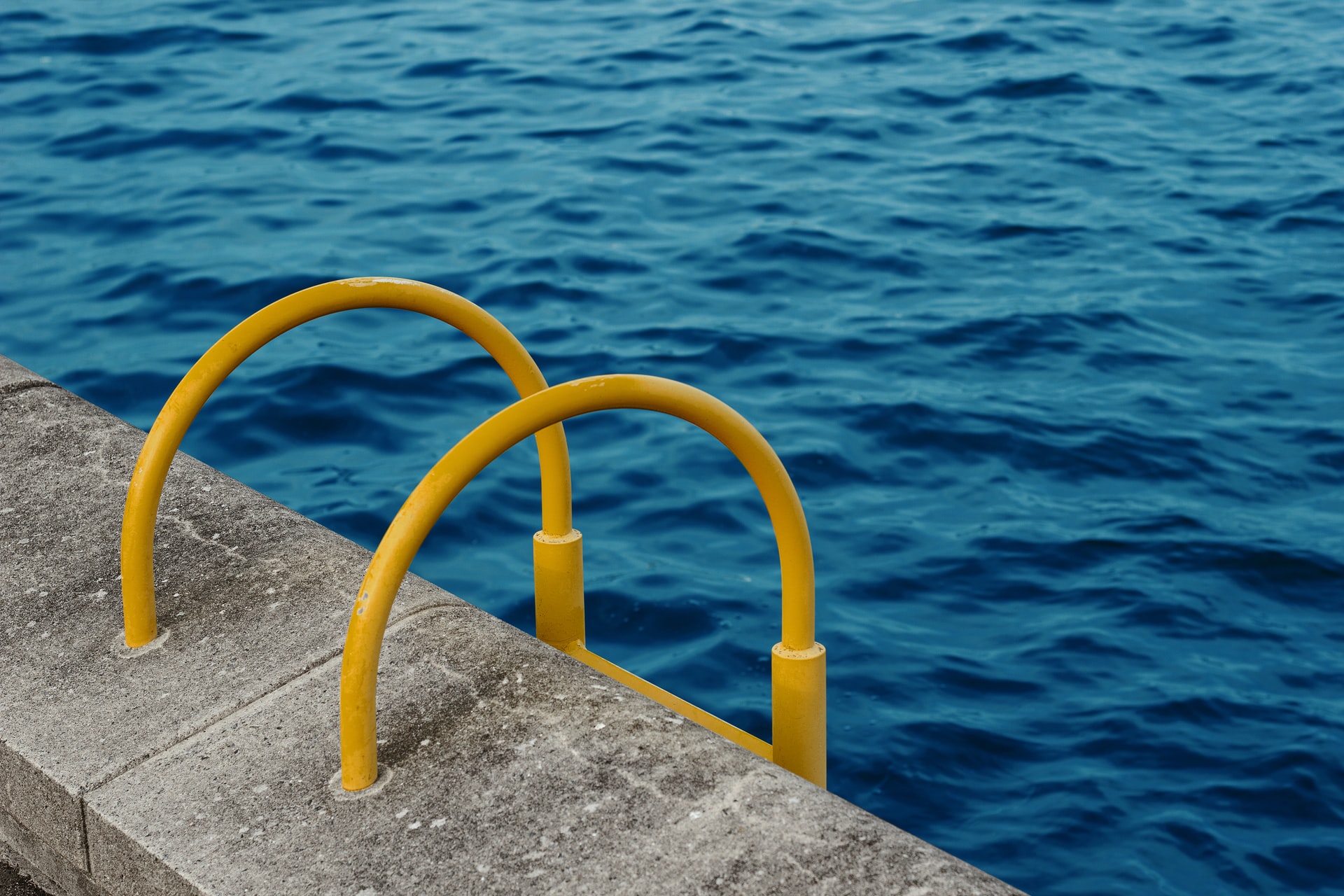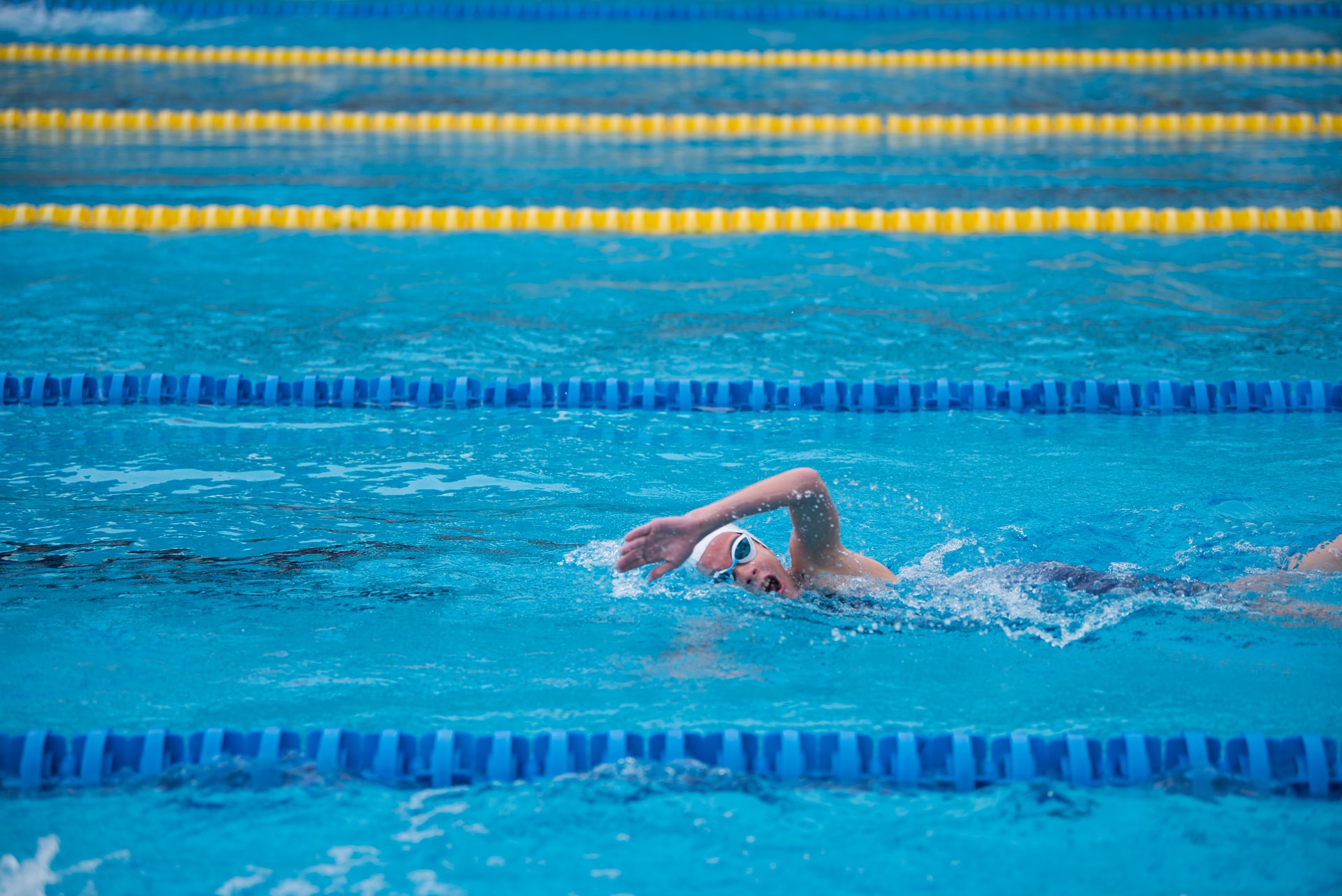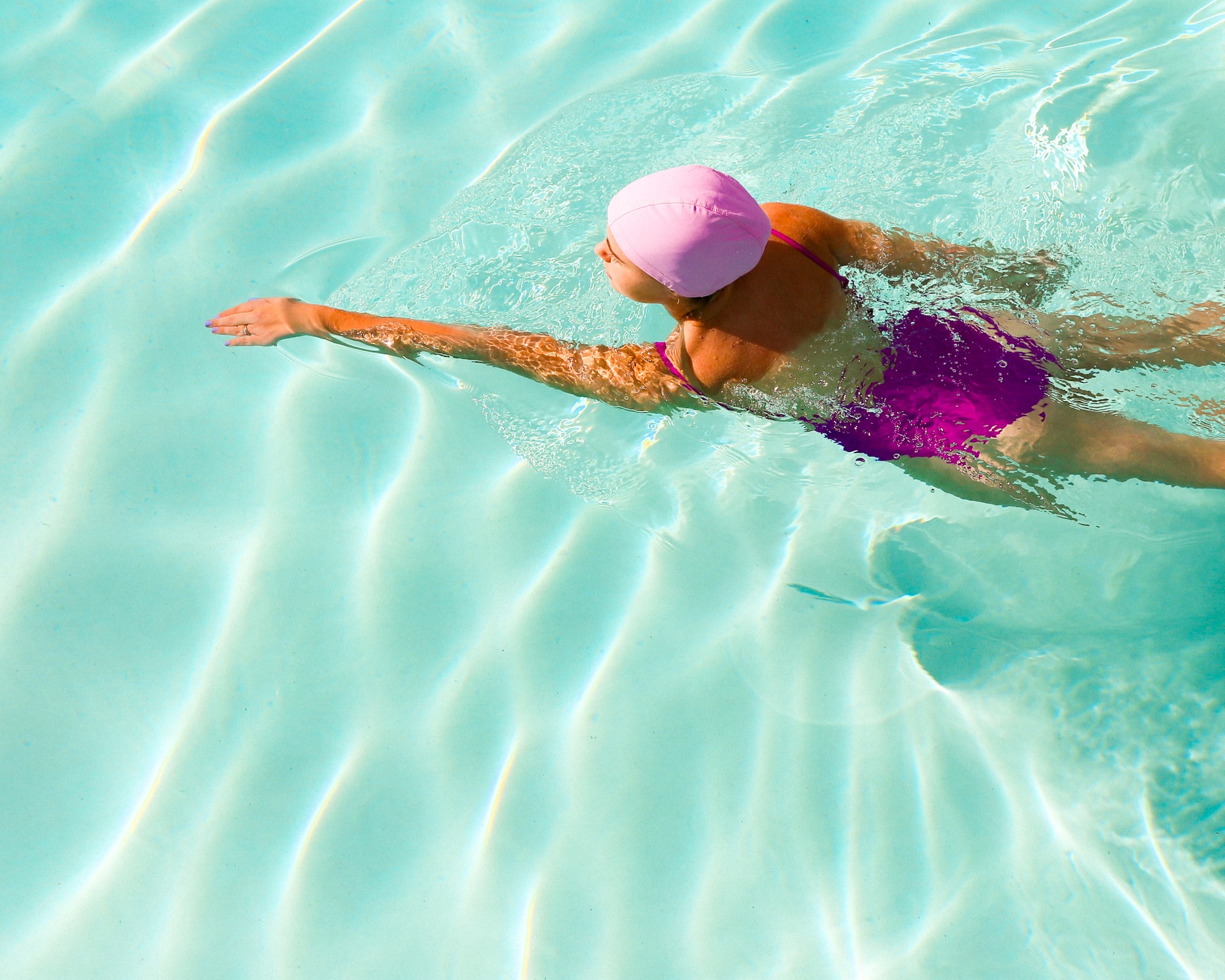The argument for swimming being the best physical activity is compelling. With proper technique, it works your entire body and puts a strain on your heart while posing a much lower risk of injury than traditional land-based sports.
Which raises the question, “Why aren’t there more of us doing it?”
Despite the seemingly limitless list of advantages, most guys prefer the gym or other forms of exercise than going to the pool. Instead of utilizing swimming as the primary activity, many people head to the pool to cool off or recover.
Of course, there is nothing wrong with taking a leisurely swim, but continuing to do the same thing every week won’t help your overall fitness.
However, a whole new world of strength and aerobic gains are at your hands if you’re completely at ease in the water and understand how to arrange your sessions.
Here is my top piece of advise for advancing in the pool:
1. Be on time
Typically, regular lane swimming sessions are offered all day long at public recreation centers. The busiest times are typically early morning (7am–9am) and early evening (before 7pm).
To determine what kind of swimmers are swimming when and at what time, it is worthwhile to attempt alternative session timings. The last lane session of the day is frequently empty, allowing you to make the most of your time in the water. You don’t want to be arriving at the pool during a family session. A 30-minute session might be sufficient.
2. Buy quality gear
Private swimming instructor lessons doesn’t require a ton of pricey equipment, which is one of its best qualities. Because of this, I’m often surprised by how little money individuals spend on the equipment they actually do need.
A good set of goggles that fit properly can make a world of difference to your experience. Choose a pair you like, then treat them with the same care you would your favorite pair of sunglasses.
A quality set of goggles should suit your head size, facial frame, and eye sockets without leaving noticeable marks close to your eyes.
 3. Get ready
3. Get ready
Swimming is minimal impact, so it’s simple to skip a warm-up before diving in. However, it’s still a good idea to slightly increase your heart rate and wake up your muscles so that you can perform at your best.
Before entering the water, begin your warm-up by concentrating on your shoulders, chest, head, neck, lower back, and legs. Prior to entering the water and beginning a leisurely pace of a variety of strokes, aim for five minutes out of the water.
DO THIS:
The following exercise will warm up the deltoids and rotator cuffs because the shoulders are most susceptible to injury.
- Hold your hands up and bend your elbows 90 degrees (as if at the bottom of a shoulder press).
- Bring your elbows together so that they meet in front of your chest now.
- Bring your hands behind your back, clasping your fingers, and lengthen your arms as you bring your elbows back to the starting position.
- Repeat the pattern 6–8 times, then go back to your starting position.
4. Don’t forget to breathe
The main challenge for more beginning swimmers is breathing. The fastest method to achieve significant progress in a short period of time is to master it.
Olympic silver medalist and two-time ten-kilometer open-water world champion Keri-Anne Payne recommends, “Your swimming breathing should be the same as your land-based breathing.” If it’s different, you’ll find it difficult.
People frequently inhale deeply while moving quickly, followed by an explosive exhalation. This is something you never do with any other activity. You should breathe slowly and comfortably.
DO THIS:
When you’re face down in the water, practice breathing out through your nose before taking a short breath in and making a small movement as your head rises.
Trying to breathe in and out during the little period between strokes is a common mistake.
5. Recognize the motions
The two strokes that are most frequently used by swimmers are the front crawl and the breaststroke. If you have the room and the ability, butterfly is the most difficult exercise and will burn the most calories.
But if you push yourself, front crawl is just as helpful and won’t irritate the other swimmers as much.
6. Clarify it.
The greatest method to raise your performance as a whole is to break down your preferred stroke into its component pieces and focus on each one separately.
A swimming instructor will frequently observe your entire stroke, then each individual component, and finally the entire stroke once more to assess your progress. You may effectively focus your solo sessions in this way as well.
- Warm up gently before dividing the stroke into the arms, legs, breathing, and body.
- Pull it altogether in the end.
- It can be really satisfying to time yourself on your first whole stroke length and then at the conclusion to observe your progress.
 7. Emphasize form
7. Emphasize form
If your technique is sloppy, much as when you lift weights at the gym, you’ll be more likely to be hurt and your swimming won’t benefit you as much.
Paul Fowler, an accomplished swim instructor and coach, operates 100 percent Swimming. He claims:
“Select good form over distance or speed. Always swim well, work on your technique, and strive to be your best selves each and every day.
Technique will enable swimming for longer distances or at a faster pace, so short pool sessions where you concentrate on your form may be more beneficial overall. Build up your pace and proper form, and the distance will come.
8. Be dependable
While swimming once a week is preferable to doing nothing, you won’t make much improvement. Regular, brief swimming workouts will result in a longer-lasting improvement.
If you can, try to swim three times each week, possibly focusing on a different aspect of your stroke or a different stroke altogether during each session. Working just your arms or just your legs is not just for the gym.
Give your arms, legs, body, and breathing short sessions, paying attention to form. If you look at your swim schedule over a month as opposed to a week, you might see a significant change.
9. Seek aid
A list of instructors at your neighborhood recreation center will be able to guide you through the fundamentals of each stroke and point out problem areas. You require assistance if you can’t maintain front crawl for longer than 25 meters.
Swimming will be more comfortable and pleasant if you know where you’re making mistakes and how to fix them. If your swimming is more advanced, consider working with a coach who can assist you in setting and achieving more specific goals.
10. Be careful.
Purchase a waterproof case for your smartphone and swim alongside a friend. They should record you swimming toward them while doing so from the side, below, and above.
Our bodies frequently act very differently from what our brains tell us we are doing. Being able to see it clearly on camera can help you correct a common front crawl mistake that strains your shoulders.
Are you swimming as efficiently as you possibly can? Take a look at your catch and kick. Since there are safety precautions in place at all pools, if you want to bring a camera there, ask the lifeguard or pool management for permission. Only ever film yourself.
11. Incorporate optional options
You can bring a ton of swim accoutrements to the pool, but in my experience, it is preferable to not bring them all at once, and the most basic option is frequently the best. Different toys have varying functions.
The most frequent piece of equipment at your neighborhood pool is a kickboard, which is just a flat, rectangular float. You can use one drill for a variety of exercises. They can assist with a leg workout, proper body alignment, and breathing exercises. They are inexpensive to purchase and a wise investment if your pool doesn’t already have one.
The possibilities are unlimited; in addition, there are pool buoys, paddles, gloves, and fins. To make the most of your equipment, acquire advice and conduct study.
12. Conduct extra drills
Drills are a simple approach to improve your fitness and skill. They allow you to incorporate swimming gear into your workouts and can speed up your swimming. They’re a helpful tool for teaching your body how to behave during a certain technique.
Drills are wonderful for forming habits that allow your body to move without you having to think about it too much.
13. Refuel
Swimming consumes a lot of energy, thus it’s typical to feel ravenous after swimming. Making sure you eat before you begin swimming will improve your performance, but eating too much food can be uncomfortable.
Pick foods that are simple to digest, such as whole grains, yogurt, nuts, and fruits. Make sure your last meal had a significant amount of slow-release carbs if you find it difficult to eat before swimming.
14. Sip frequently
You may forget to drink water because you won’t experience the discomfort of sweating in the water. Water rushing in and out of the mouth can help quell thirst.
When I’m swimming, it always surprises me how few water bottles I see at the poolside, but you wouldn’t go for a long run without water. By combining a hydration tablet or gel with electrolytes, you can ease cramps in your legs or feet if you experience them while swimming.
 15. Create exams
15. Create exams
If you’ve perfected your technique and are getting the most out of your swim workouts but are starting to grow bored, establish challenges for yourself to keep you interested and motivated.
You may look at pool and open-water events, or they could be as straightforward as being able to swim farther or faster.
VISIT THIS:
Swimathon provides distances ranging from 400m to 30.9k at more than 450 locations throughout the UK. Both individuals and teams are welcome to participate in this well-liked annual event.
Swimathon.org has more information.
16. Build up
Strength training and activities that benefit your time in the water can help you improve outside of the pool. Viv Rickman, a personal trainer and open-water instructor, exhorts swimmers to achieve a state of “zen” in the water.
She explains, “For me, it’s when my breathing, arms, and body are in harmony. My rhythm just flows and my attention is in the present moment when my rotation feels flawless and there is a cool void beneath me.
DO THIS:
The cable woodchop is the ideal core-strengthening exercise, according to Viv Rickman, who suggests strength training to improve swimming form.
- An adjustable cable machine’s top position should be connected to a handle. Place your feet shoulder-width apart as you stance next to the machine.
- Grab the handle with both hands above one shoulder while raising your arms upward.
- Pull the handle down and across your body to the opposite side while keeping your arms fully extended. Maintain a small bend in your knees and let your hips and torso rotate.
- To get back to the beginning position, slowly reverse the movement.
17. Move it outdoors
Leaving the pool is a fantastic method to up your challenge level and make swimming more interesting. There is a reason why outdoor swimming is becoming more and more popular and why people are so enthusiastic about it. The advantages of swimming are enhanced by breathing clean air, exercising in natural daylight, and being in nature.
New abilities and talents are also need for swimming in open water. It can seem quite different to be unable to see the bottom or push off the edge of a pool. In the UK, there are many open-water locations that provide set lengths to travel along with safety, assistance, and facilities.

